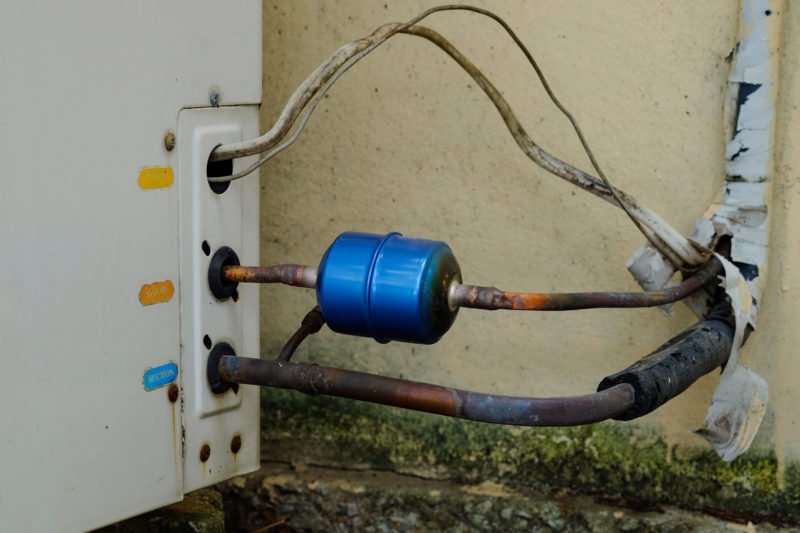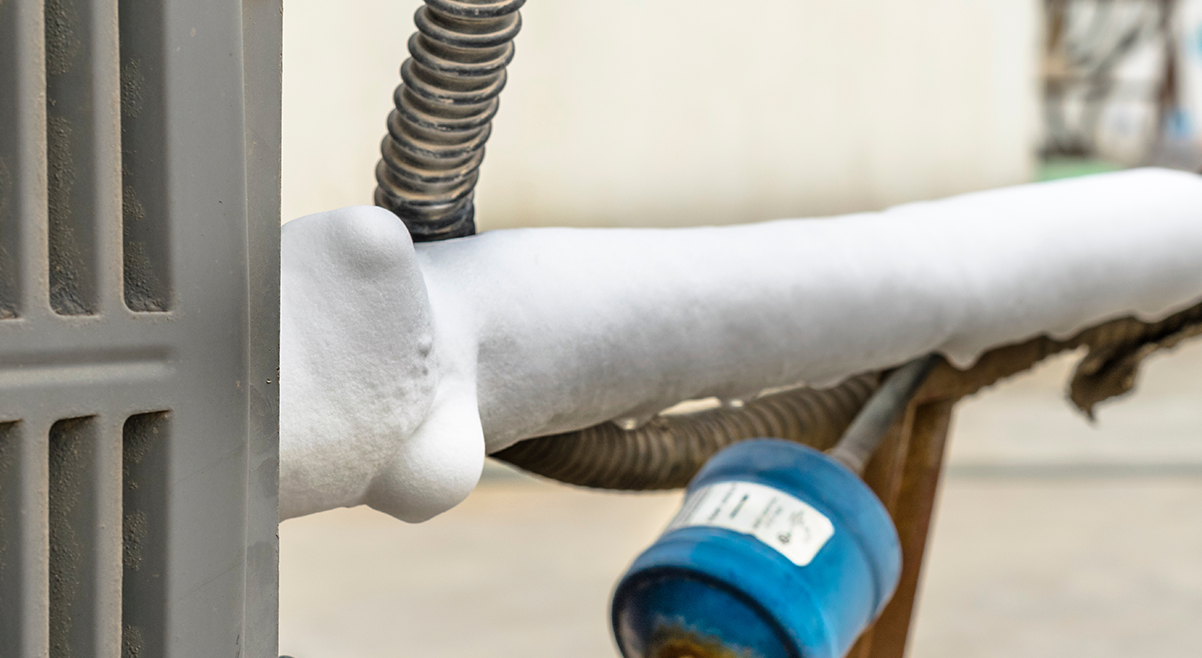How to Deal With a Frozen AC Pipe - Critical Measures for Recovery
How to Deal With a Frozen AC Pipe - Critical Measures for Recovery
Blog Article
Almost everyone has their own concepts when it comes to Why Is Ice On My Outside Air Conditione.

Introduction
Uncovering that your air conditioning pipeline is iced up can be concerning, specifically during hot summertime when you rely on your ac unit one of the most. Recognizing what to do in such a situation is vital to prevent additional damages to your air conditioning system and ensure your comfort inside your home.
Recognizing the Causes
Several variables can contribute to the freezing of an a/c pipeline. Understanding these causes can assist you attend to the concern effectively.
Lack of Airflow
One usual cause of a frozen air conditioning pipeline is inadequate air movement. When the air movement over the evaporator coil is restricted, it can cause the coil to drop below freezing temperature, causing ice development on the pipe.
Low Refrigerant Levels
Inadequate refrigerant degrees in your a/c system can additionally cause an icy pipeline. Low refrigerant levels can trigger the pressure in the system to drop, causing the cold of dampness on the evaporator coil.
Winter Conditions
In cooler environments, freezing temperature levels outside can add to the cold of air conditioner pipelines. If your AC unit is not properly insulated or if there are leaks in the ductwork, cold air can penetrate the system, creating the pipeline to ice up.
Dirty Air Filters
Unclean or clogged up air filters can limit air movement in your a/c system, bring about numerous problems, including a frozen pipe. It's necessary to replace or clean your air filters regularly to make certain correct air movement and stop ice accumulation.
Signs of a Frozen AC Pipe
Recognizing the indicators of an icy air conditioner pipeline is vital for timely action.
Reduced Airflow
If you see a substantial reduction in air flow from your vents, it could show an icy pipeline.
Ice Buildup on the Pipe
Noticeable ice accumulation on the refrigerant line or the evaporator coil is a clear indication of an icy a/c pipe.
Unusual Sounds from the Unit
Uncommon audios, such as hissing or gurgling, coming from your air conditioning device can indicate that there's ice present on the pipeline.
Immediate Actions to Take
When confronted with a frozen air conditioner pipe, it's necessary to act rapidly to prevent more damage to your cooling system.
Switching off the a/c
The initial step is to turn off your ac system to stop the system from running and worsening the problem.
Looking for Blockages
Check the location around the indoor device for any type of blockages that may be obstructing airflow, such as furnishings or drapes.
Defrosting the Pipe
You can use mild methods like putting towels taken in warm water around the icy pipe to assist thaw it gradually.
Preventive Measures
Taking safety nets can help avoid future events of an icy a/c pipe.
When DIY Methods Fail
If your attempts to thaw the pipeline or address other issues are not successful, it's time to contact a specialist.
Significance of Hiring a Professional HVAC Technician
A qualified HVAC technician has the know-how and devices required to identify and fix issues with your air conditioning system securely and efficiently.
Routine Maintenance Checks
Set up regular maintenance contact a specialist HVAC technician to make sure that your air conditioner system is running efficiently.
Changing Air Filters
On a regular basis replace or cleanse your air filters to prevent air movement limitations and keep ideal efficiency.
Insulating Exposed Pipes
If your air conditioner pipelines are revealed to cool temperature levels, consider insulating them to prevent freezing during winter season.
Seeking Professional Help
If DIY techniques stop working to resolve the issue or if you're uncertain about exactly how to proceed, it's best to seek support from a qualified HVAC specialist.
Final thought
Handling an icy a/c pipeline can be a discouraging experience, however understanding exactly how to respond can assist reduce damage and restore convenience to your home. By understanding the causes, identifying the indicators, and taking punctual activity, you can efficiently deal with the issue and prevent future occurrences.
Frozen AC Line: Why It Happens & What To Do About It
A frozen AC line can be a rather peculiar sight in a place like Phoenix, Arizona where nothing ever freezes. In this post, we’ll discuss what makes an air conditioner line frozen – and what you can do about it.
Dirty Air Filters
Did you know that you should be cleaning or replacing your air filters on a monthly basis? Failing to do this can result in airflow issues that, in turn, cause your evaporator coils and lines to freeze over. You’ll notice a buildup of ice on both components, although the buildup on your pipes will, of course, be more evident unless you open your air condition up to reveal the coils.
What To Do About It
Give your air filter a good cleaning if it’s reusable. If not, replace the filter outright. Next, switch your air conditioner’s fan setting on and leave it there for 2-3 hours. This will draw warm air in, helping to thaw your evaporator coil. You can also check out this article for some tips on cleaning the coils themselves if you’d like to speed the process up. Before you switch the unit back to its normal state, make sure the supply vents are completely unobstructed and free of dust or other debris.
If you keep having this issue even after replacing your filters regularly, contact a local HVAC repair company and have them inspect your evaporator coil, ductwork, and any other components that may be at fault. If you live in the Phoenix, Arizona area, give American Home Water and Air a call.
Low Refrigerant Levels/Leakage
What To Do About It
Contrary to what air conditioner “recharge” companies often tell their clients about refrigerant, it should never need to be simply refilled. You see, refrigerant runs in what experts refer to as a “closed loop.” Refrigerant really shouldn’t be leaving that loop. If it is, you’ve got a leak.
Paying someone to come and pump more refrigerant into your system (aka “recharge” it) isn’t the solution. Doing that will simply kick the can down the road. Besides, refrigerant leaks can be harmful to the environment and people in your home.
Rather, you need to take care of the leak with the help of a technician. Check out this article for some more information about dealing with air conditioners that are leaking refrigerant. Before you contact a technician, switch your thermostat to the off position. Then, switch the fan setting on and let it run for 2-3 hours so the unit can thaw.
Improper Temperature Setting
Improper temperature settings can also cause a drop in your air conditioner’s pressure. What many people don’t realize is that air conditioners are actually designed to run when temperatures have fallen above roughly 60 degrees Fahrenheit. If you run the unit when it’s cold outside, you’ll run into many issues, including frozen components.

As an avid person who reads about What Do I Do If My AC Pipe Is Frozen, I thought sharing that excerpt was a good idea. Sharing is good. Helping others is fun. Thanks for your time. Don't forget to come by our website back soon.
Find Out More Report this page